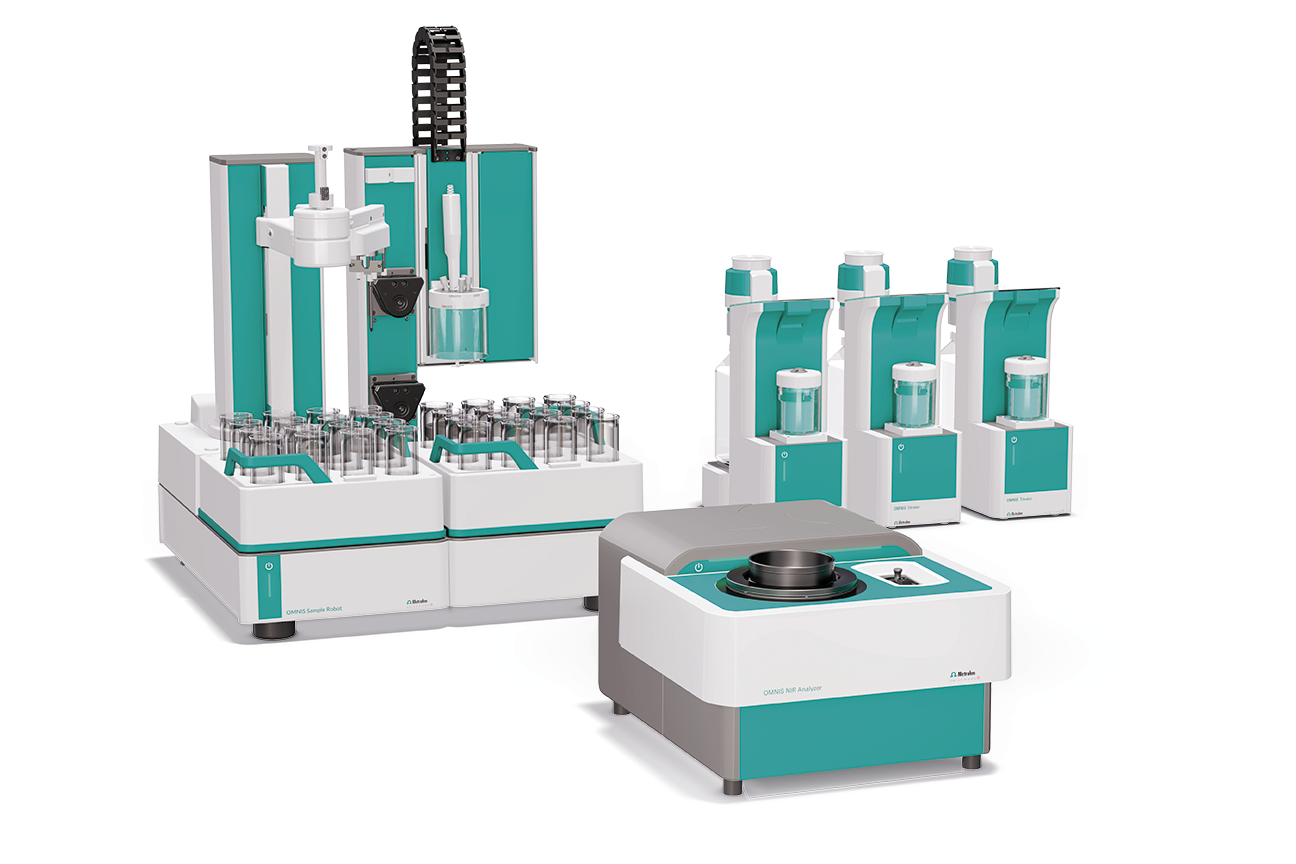NIR Capabilities Added to Metrohm OMNIS Platform
Metrohm considers NIR spectroscopy to be fast, easy to use, non-destructive, and chemical-free, and has developed a new addition to its platform for the analysis of liquid, solid, or a combination of samples in a short time.
Metrohm USA, an instrument manufacturer headquartered in Riverview, Florida, has announced an expansion to its OMNIS analytical platform with the introduction of OMNIS NIRS, adding near-infrared (NIR) spectroscopy capabilities designed to handle three distinct sample types (1).
OMNIS NIRS | Image Credit: © Metrohm USA

The OMNIS platform, Metrohm says, does not require the user to have advanced knowledge of chemometrics—in fact, no knowledge at all, according to a news item on the Metrohm website—and is designed to “seamlessly” integrate NIR spectroscopy and titration, offering full automation with the OMNIS Sample Robot (1,2). Metrohm considers the advantages of NIR, in part, to be that it is fast, easy to use, non-destructive, and chemical-free (2). (Ed. note: For purposes of this brand name, Metrohm uses the abbreviation “NIRS” to refer to NIR spectroscopy.)
According to an April 10 press release from the company, OMNIS NIRS Liquid caters to liquid samples, OMNIS NIRS Solid for solid and viscous ones, and OMNIS NIRS Liquid/Solid for dual analysis (1). The “multi-parameter” capability of the OMNIS NIR Analyzer is intended to have a streamlining effect that produces results in under 10 s for both liquid and solid samples (2). Solid sample measurement is achieved in what the company calls an “automated rotation mode” promoting high reproducibility of results, even in the case of extremely inhomogeneous samples (2).
Metrohm’s release of this new addition to the OMNIS line coincided with the Analytica 2024 conference in Munich, Germany from April 9–12, where a session on new instrumentation in spectroscopy brought to light some other innovations in the field, including mid-infrared (MIR) catheter technology, laser ablation–inductively coupled plasma–mass spectrometry (LA-ICP-MS) for bioimaging of nanomaterials, and X-ray fluorescence spectrometry in total reflection set-up (TXRF) analysis of trace metals (3).
Two of the broader aspects of the NIR-titration integration that Metrohm said this newest innovation can boast are reducing or eliminating user error (to “virtually zero”) and complying with standard operating procedures (SOPs) (1,2). The platform’s ability to be customized can fit the needs of specific users and, with proper deployment, improve laboratory efficiency.
Zeroing in further on the particulars of the OMNIS NIR Analyzer, Metrohm said liquid samples can be adjusted in a short period of time to any temperature between 25–80 ºC, and large sample quantities are able to be analyzed quickly with no software interaction (1). Also, the OMNIS Model Developer (OMD) is designed to automatically establish prediction model parameters, streamlining the integration of NIR even more (2).
Metrohm has provided a PDF brochure with more information about the OMNIS NIRS at this link: https://www.metrohm.com/content/dam/metrohm/shared/documents/brochures/8000/80005459EN.pdf.
References
(1) Metrohm Introduces OMNIS NIRS: Expanding Capabilities in Near-Infrared Spectroscopy. Metrohm USA. Metrohm AG, 2024 (accessed 2024-04-10).
(2) OMNIS NIRS Launched. Metrohm USA. Metrohm AG, 2024. https://www.metrohm.com/en_us/discover/news/2024/omnis-nirs-launched.html (accessed 2024-04-18).
(3) Chasse, J. New Instrument Development in Spectroscopy. Spectroscopy. MJH Life Sciences, 2024. https://www.spectroscopyonline.com/view/new-instrument-development-in-spectroscopy (accessed 2024-04-12).
NIR Spectroscopy Explored as Sustainable Approach to Detecting Bovine Mastitis
April 23rd 2025A new study published in Applied Food Research demonstrates that near-infrared spectroscopy (NIRS) can effectively detect subclinical bovine mastitis in milk, offering a fast, non-invasive method to guide targeted antibiotic treatment and support sustainable dairy practices.
New AI Strategy for Mycotoxin Detection in Cereal Grains
April 21st 2025Researchers from Jiangsu University and Zhejiang University of Water Resources and Electric Power have developed a transfer learning approach that significantly enhances the accuracy and adaptability of NIR spectroscopy models for detecting mycotoxins in cereals.
Karl Norris: A Pioneer in Optical Measurements and Near-Infrared Spectroscopy, Part II
April 21st 2025In this two-part "Icons of Spectroscopy" column, executive editor Jerome Workman Jr. details how Karl H. Norris has impacted the analysis of food, agricultural products, and pharmaceuticals over six decades. His pioneering work in optical analysis methods including his development and refinement of near-infrared spectroscopy, has transformed analysis technology. In this Part II article of a two-part series, we summarize Norris’ foundational publications in NIR, his patents, achievements, and legacy.